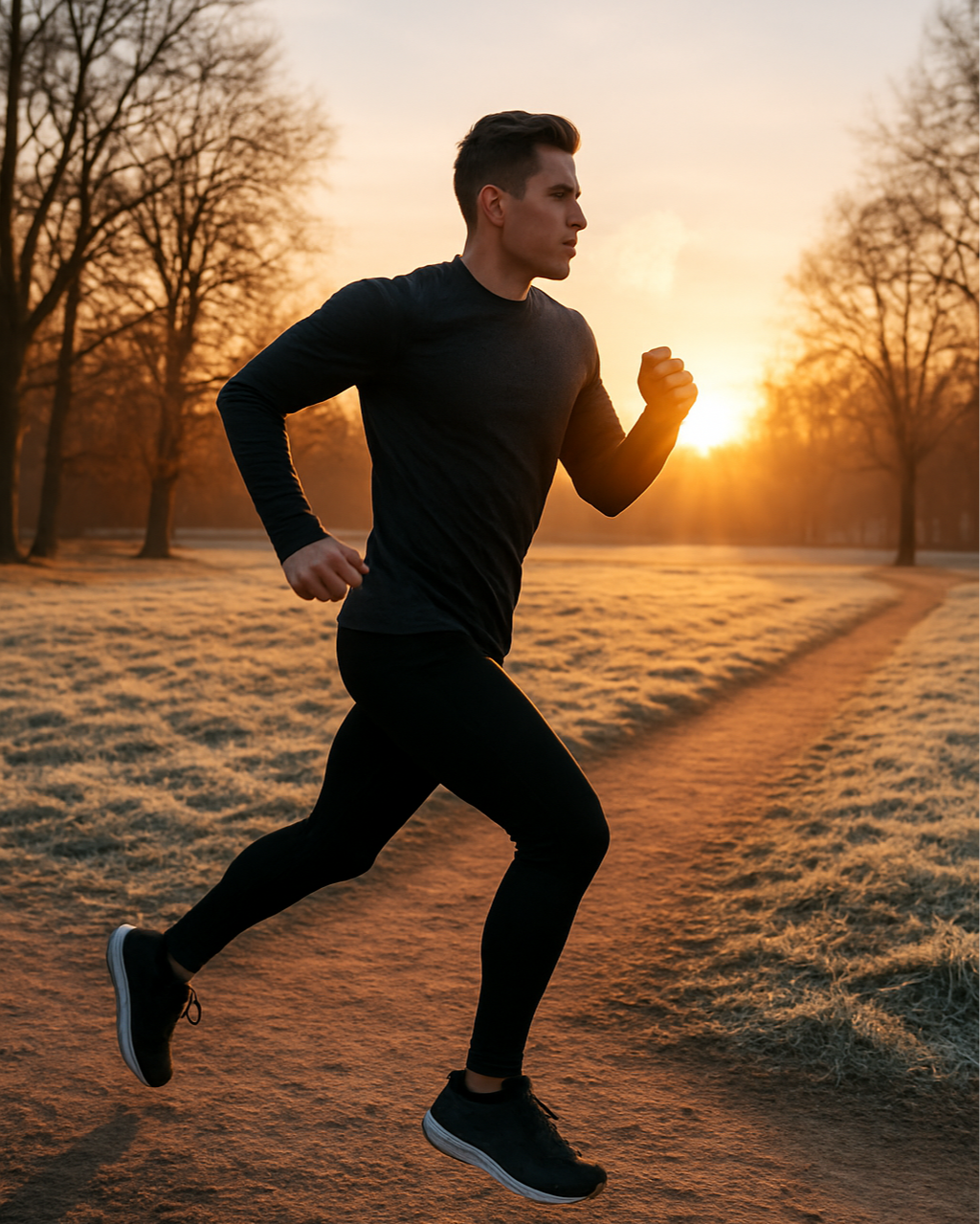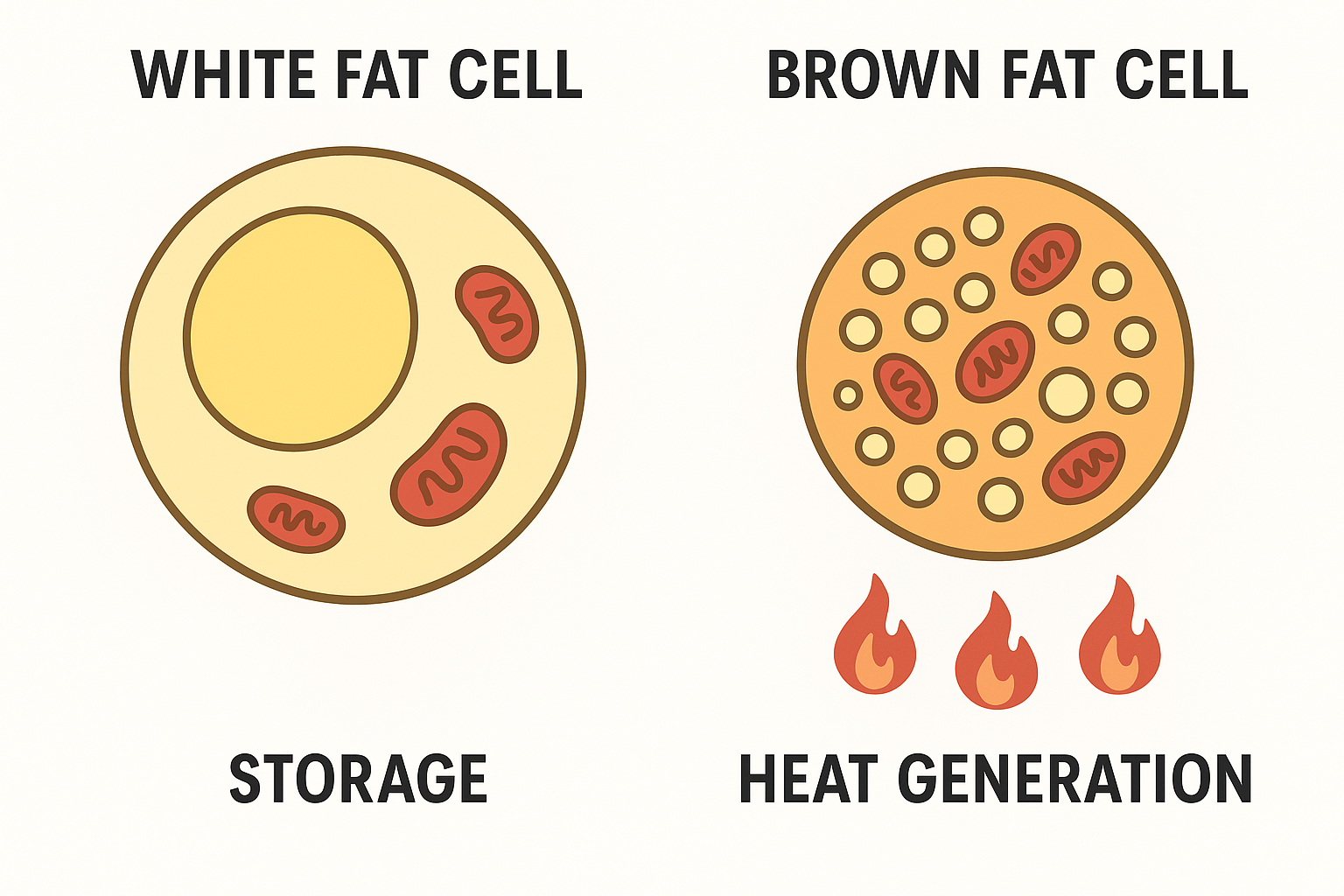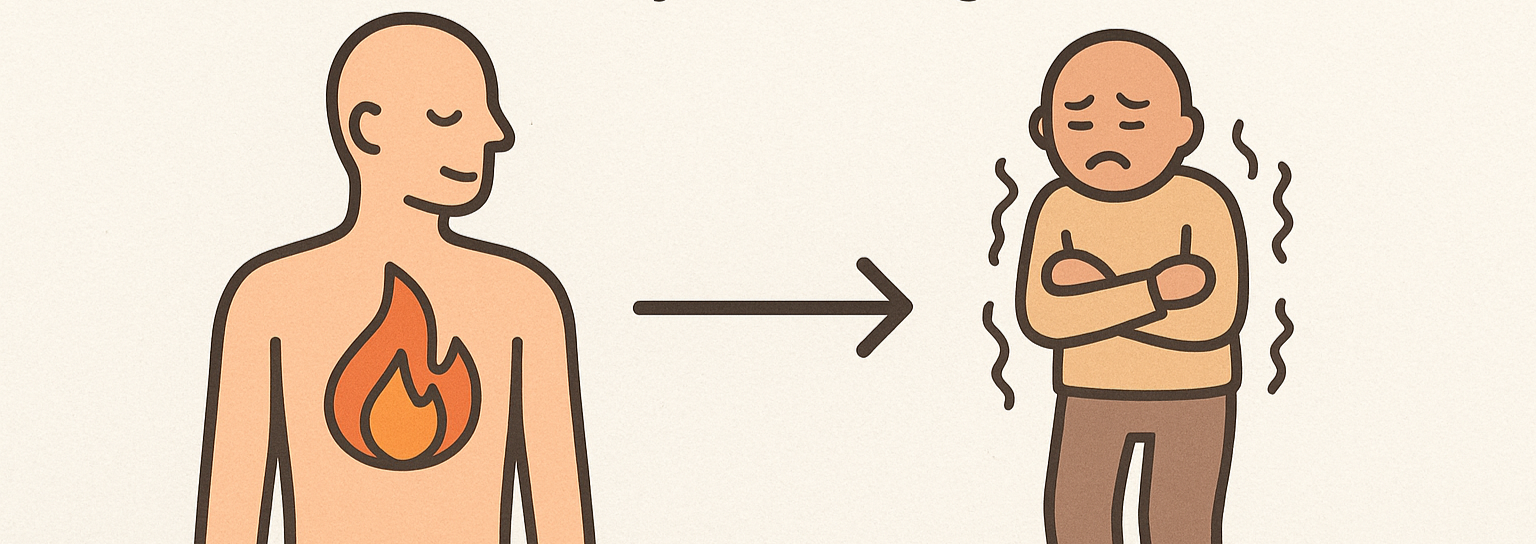The Fire Within: How Cold Exposure Can Ignite Your Metabolism
As the temperature drops and the days get shorter, the ancient urge to hibernate kicks in. For many, winter is a season to be endured—a time when fitness goals are traded for fleece blankets and our metabolism seems to slow down just by looking at the thermostat.
But what if that narrative is all wrong? What if the cold isn't an obstacle, but an opportunity?
What if this chilly air is actually a powerful, untapped tool to re-engineer your metabolism, sculpt your physique, and sharpen your mind? Emerging science is revealing that cold exposure doesn't just make you shiver—it can awaken a hidden metabolic furnace inside your body.
Challenging the "Winter Weight" Myth
Let's address the elephant in the room: "winter weight." It’s true that we tend to be less active and have access to more calorie-dense holiday foods. However, your body’s natural response to cold is not to store fat, but to burn it.
To maintain its core temperature of 98.6°F (37°C) in a cold environment, your body must generate heat. This process is called thermogenesis, and it is incredibly energy-intensive. It's a 24/7 metabolic demand that you don't have in warmer months.
But the most exciting part isn't just burning more calories. It's what your body burns, and how it does it. This is where we introduce your body's secret weapon: brown fat.
What is Brown Fat? Your Metabolic Furnace
For decades, we believed that humans only had one kind of fat: the white, inert, energy-storing kind we’re all trying to lose. This is called White Adipose Tissue (WAT). Its job is to store energy as a reserve.
But we also have a second, radically different kind of fat: Brown Adipose Tissue (BAT).
Think of brown fat as the "good" fat. It's not a storage depot; it's a high-performance furnace. Its main role is not to store energy, but to burn it to generate heat.
Why is it brown? It's packed with a massive number of mitochondria—the "power plants" in all your cells. These mitochondria are iron-rich, giving the tissue its distinct brown color. And in BAT, these mitochondria have a unique "superpower."
The Science: How Cold Flips Your "Metabolic Switch"
So, you have this amazing fat-burning furnace inside you. How do you turn it on? You expose it to cold.
Cold is the single most powerful activator of BAT. The process works like this:
You Feel Cold: Receptors in your skin detect the drop in temperature and send an alert to your brain.
The Signal is Sent: Your brain (specifically, the hypothalamus) activates the sympathetic nervous system.
BAT Activates: This signal tells your BAT to "uncouple" its mitochondria. In a normal cell, mitochondria burn fuel to create ATP (cellular energy). But in activated brown fat, this process is "uncoupled" from ATP production.
Heat is Released: Instead of making ATP, the mitochondria just burn fuel—glucose and, more importantly, fatty acids pulled from your white fat stores—and release all of that energy as pure heat.
This process is known as non-shivering thermogenesis (NST) because your body is heating itself before it has to resort to the inefficient, last-ditch effort of shivering. It's a silent, powerful, calorie-torching mechanism that's just waiting to be used.
Beyond Fat Burning: The Other Perks of Cold
The metabolic benefits are just the start. Training in the cold can have a cascade of positive effects:
Improved Endurance: When you run in the heat, your heart has to do two jobs: pump blood to your muscles and pump blood to your skin to cool you down. In the cold, your cardiovascular system is more efficient, as it can dedicate more resources to your working muscles. This often leads to faster times and greater endurance.
Mental Resilience: Let's be honest: it takes discipline to get out the door. But the "shock" of the cold air triggers a significant release of norepinephrine (a hormone and neurotransmitter), which sharpens focus, elevates mood, and fights the mental fog of Seasonal Affective Disorder (SAD).
Better Inflammation Control: Just like a targeted ice bath, exercising in the cold can have a systemic anti-inflammatory effect, helping to reduce joint pain and improve recovery.
Essential Gear for Cold-Weather Training
The Base Layer (No Cotton!): This is the most important piece. Cotton absorbs sweat and holds it against your skin, making you colder and increasing risk.
Recommendation: Merino Wool or Synthetic Base Layers. Merino wool is a natural wonder: it wicks moisture, regulates temperature, and is naturally odor-resistant. Synthetic fabrics (like polyester or polypropylene) are also excellent at wicking sweat away from your body to keep you dry.
The Insulating Layer: This layer traps your body heat.
Recommendation: A Fleece Pullover or Light Vest. A grid-fleece or micro-fleece provides excellent warmth without much bulk. A vest is a great option as it keeps your core warm while allowing your arms to move freely.
The Outer Shell: This layer protects you from wind, rain, and snow.
Recommendation: A Wind-Resistant, Breathable Jacket. You don't want a fully waterproof-hardshell (like a ski jacket) unless it's pouring, as it won't breathe and you'll get soaked with sweat from the inside. Look for a lightweight windbreaker or softshell.
Nutritional Support for Your Winter Metabolism
Disclaimer: Always prioritize a whole-food, balanced diet, and consult with your healthcare provider before adding any new supplements to your regimen.
The Sunshine Vitamin:
Recommendation: Vitamin D3. With reduced sun exposure in winter, most people become deficient in Vitamin D. This is critical for immune function, bone health, and, importantly, mood. It's an essential supplement to combat the "winter blues" and keep your immune system strong.
The Hydration Helper:
Recommendation: An Insulated Water Bottle. This is more of a "tool," but it's crucial. You still sweat in the cold, and you lose significant moisture just from breathing, but your thirst mechanism is often blunted.
Bonus Tip: Fill an insulated bottle with warm water or an herbal tea before your workout. It's more pleasant to drink and won't freeze.
The Inflammation Manager:
Recommendation: Omega-3 Fatty Acids (Fish Oil or Algal Oil). Cold, dry air can be inflammatory for your airways and joints. Omega-3s (EPA and DHA) are powerful anti-inflammatories that support cardiovascular health, joint mobility, and brain function.
The Takeaway: Reframe Your Winter
Stop seeing winter as an obstacle. Start seeing it as a performance-enhancing environment.
The cold is not your enemy. It’s a powerful ancestral signal that can awaken dormant metabolic pathways, boost your mental clarity, and transform your body's ability to generate energy. By understanding the science of brown fat and non-shivering thermogenesis, you can stop dreading the cold and start using it.
So layer up, get out there, and ignite that fire within.
Works Cited
Cannon, B., & Nedergaard, J. (2010). Brown adipose tissue: function and physiological significance. Physiological Reviews, 84(1), 277–359. https://doi.org/10.1152/physrev.00015.2003
Leitner, B. P., Huang, S., & Kias, A. (2017). Brown Adipose Tissue and BAmP-ing Up Metabolism. Current Molecular Biology Reports, 3(2), 162–171. https://doi.org/10.1007/s40610-017-0056-8
Cypess, A. M., Lehman, S., Williams, G., et al. (2009). Identification and importance of brown adipose tissue in adult humans. The New England Journal of Medicine, 360(15), 1509–1517. https://doi.org/10.1056/NEJMoa0810780
Janssen, M. F., et al. (2022). The effect of cold exposure on brain-related symptoms in Seasonal Affective Disorder: a pilot study. Frontiers in Psychiatry, 13. https://doi.org/10.3389/fpsyt.2022.951560
Castellani, J. W., & Young, A. J. (2016). Health and performance effects of cold-air exposure. Journal of Applied Physiology, 120(6), 674–681. https://doi.org/10.1152/japplphysiol.00641.2015




